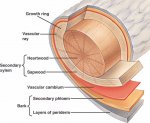tantric
Yamadori
what it says. the lilac i tried to air layer just regrew its bark, though i was sure i cut deep enough
Yes. At a certain po0int the branch will break.Can you scrape too much material off?
Yep; if you get all the way down to the heartwood there will be no sapwood to transport water up to the leaves:Can you scrape too much material off?

Yes, I've killed the top of a tree doing this. I use a razor knife held perpendicular to the trunk and scrape off some wood after removing the outer bark ring. In years past, I've opened up the layer and cut off any callus that looked like it might bridge the gap.Can you scrape too much material off?
The wire is just there to hold up the container. I scraped,let it dry a day then wiped it off with alcohol. View attachment 79618 View attachment 79619
what it says. the lilac i tried to air layer just regrew its bark, though i was sure i cut deep enough
That is 'never' the problem.you didn't cut wide enough.
I don't think that's always true. Vigorously growing trees can swallow up a piece of wire and go right on growing.That is 'never' the problem.
BTW, if you are patient, you can just tighten a wire tourniquet around the stem (no cutting) - eventually it will grow roots (if that area of the stem is capable of rooting).
I don't think that's always true. Vigorously growing trees can swallow up a piece of wire and go right on growing.
. It is always true but there has to be moss or soil to keep the area moist. In fact you don't even need the wire, it will grow roots just from being moist. Cutting a branch or trunk as in a ground layer insures roots grow from predetermined spot radially around the trunk or branch. One can just slap moss on a branch without cutting and it will grow roots there. I have seen trees touch overhang on roofs and grow roots on the shingles moss that collects there.I don't think that's always true. Vigorously growing trees can swallow up a piece of wire and go right on growing.
yup. It is always true but there has to be moss or soil to keep the area moist. In fact you don't even need the wire, it will grow roots just from being moist. Cutting a branch or trunk as in a ground layer insures roots grow from predetermined spot radially around the trunk or branch. One can just slap moss on a branch without cutting and it will grow roots there. I have seen trees touch overhang on roofs and grow roots on the shingles moss that collects there.
. It is always true but there has to be moss or soil to keep the area moist. In fact you don't even need the wire, it will grow roots just from being moist. Cutting a branch or trunk as in a ground layer insures roots grow from predetermined spot radially around the trunk or branch. One can just slap moss on a branch without cutting and it will grow roots there. I have seen trees touch overhang on roofs and grow roots on the shingles moss that collects there.
